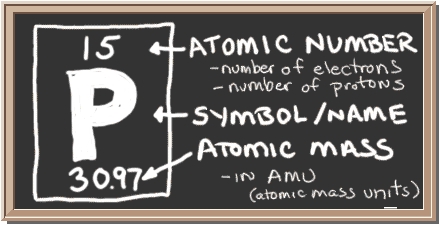Learning My N-P-K's (part 2)
In my last blog, I talked about my struggle with the chemistry, the science of gardening, the bones that make it all work--not my forte. However, I decided to face it as a mature gardening adult, and learn, for starters, my N-P-Ks, those three mysterious numbers found on boxes of fertilizers and bottles of plant food. As I mentioned in my last blog (May 1), the first number listed stands for nitrogen, "N", which is essential for for healthy leaf growth. I discussed what your plants might look like if they were nitrogen deficient, and some suggestions to solve the problem.
Now we come to the second number, which informs the user of the percentage of phosphorus, "P", contained in the product inside.
I have been told (by a former science teacher, no less) that phosphorus has been used since WWI up through present day wars as a smoke tracer, an explosive, a poison and nerve gas, and has been called "the Devil's element". So why would I want this destroyer of life in my benign veggie garden? Well, it turns out that phosphorus comes in many forms and colors. It actually takes up 1 % of each one of our body weights, and is found in each cell of the human body without smoking or poisoning. It's primary use in our body, unlike in Vietnam, is the formation of bones and teeth. And just to prove to you phosphorus' versatility, it is the primary ingredient found on the head of a safety match. Believe me, this is all very confusing to a science dropout.
Phosphorus was actually discovered by a man from Munich, Germany named Hennig Brand in 1669, who found it while experimenting with urine, producing a product that actually gave off a pale green glow. He kept his method secret, as he, along with all alchemists of the day, was planning on turning his discovery into gold. He finally agreed to share his formula, and gardening has never been the same since.
But back to the question as to why any of us would want phosphorus in our gardens. Phosphorus is actually a mineral that is essential to metabolism. It is the principal element in the structure of the nucleus and cytoplasm of all tissue cells. Without it, as with nitrogen, plants do not thrive. Phosphorus is instrumental in aiding a plant convert needed nutrients into the useable building blocks that it needs to grow. If your plants are spindly, stunted in growth, have leaves that are blue/green with a purplish tinge, produce small fruit with an acid taste, or set very little fruit at all, you most likely have a phosphorus deficiency. Plants that are especially susceptible to this deficiency are carrots, lettuce, spinach, apples, currents, and gooseberries. The purplish tinge seen on the underside of tomato leaves indicates a "P" problem.
These deficiencies occur primarily in areas where there is a high level of rainfall, especially if the soil is acidic, clay, or poor chalk. Cold weather can also be a factor in the poor absorption of phosphorus.
The remedy is simple. Add organic material such as fish fertilizer as a soil drench, bone meal, colloidal phosphate or compost (food wastes are quite high in phosphorous). Also, the addition of rock phosphate is highly recommended. Edward C. Smith, author of The Vegetable Gardener's Bible, states that as phosphorus is most likely to be the nutrient missing from the soil, adding rock phosphate whenever you start a new garden is a wise move. He recommends 10 pounds per 100 square feet. Be forewarned, however. Plants that naturally adapt to low levels of available phosphate are more likely to suffer from phosphate poisoning. Aha! Back to a war reference.
Mr. Smith also makes another interesting point; do not be misled when you read numbers on the package of rock phosphate (0-4-0) that its phosphate contents is only 4%. That 4% represents the immediate available phosphorus. The product actually is about 30% phosphorus with more than 25% of it in a slow release that will become available over time.
We have one more letter to explore in our nutrient alphabet, and in my next blog I will discuss that third label number. Mmmmmm. Could "K" stand for "Kompost"?

Phosphorus symbol from the elemental chart. (graphic from www.blackdiamond.org)


Posted by bil paul on May 25, 2013 at 6:14 PM